Previous Content:
In The Air: Epidose 1: Introduction
In The Air: Episode 2 - Preparing for Surface Mount Work
In The Air: Episode 3 - Surface Mount Beginnings
In The Air: Episode 4 - Inductors
In The Air: Episode 5 - PCB Design
In The Air: Episode 6 - Getting Ready For PCBs
In The Air: Episode 7 - Still Getting Ready for PCBs
In The Air: Episode 8 - SMT Population
In The Air: Episode 9: Pump Control
Introduction
The original concept for this project was to develop a wireless node capable of determining PM10 and PM2.5 levels. The PM10 and PM2.5 quantities are globally recognized as the standard for measuring air quality, and as such the demand for robust embeddable modules is increasing. A CC3200 launchpad would be coupled with a particle counting sensor and a pump to create the node, and it could be embedded into any unit a user desired for monitoring air quality. I'll take you through the project progression chronologically (First blog post introduced my idea and disclosed my credentials). Below is a picture of the Air Quality Node created from a custom Booster Pack PCB and a CC3200 Launchpad. Note, the sensor and pump are not pictured.
CC3200 Launchpad showing the Particle Counting Booster Pack (click to zoom).
The Beginning
I have experience working with surface mount components, but usually I have access to expensive equipment to use such as microscopes and manual pick-and-place machines. In this case, the budget was $500 and I only had a fine tip soldering iron to solder with. I did my initial pricing research for instruments and tools and came up with a list of items to purchase (second blog post):
- A Heat Gun or Hot Air Station - TENMA 21-11410 (Discontinued?)
- A Preheater - http://www.element14.com/community/view-product.jspa?fsku=&nsku=32T0391 &COM=noscript TENMA 21-10135 MINI SMD PREHEATER, 100-350 DEG C
- Dental Picks - http://www.element14.com/community/view-product.jspa?fsku=&nsku=06X8668&COM=noscript DURATOOL 21-13885 DENTAL STYLE PICKS
- Tweezers - http://www.element14.com/community/view-product.jspa?fsku=1002038&nsku=92N3621&COM=noscript AVEN 1340 PRECESSION TWEEZER, 120MM
- Solder Paste - http://www.element14.com/community/view-product.jspa?fsku=&nsku=84R8665 &COM=noscript CHIP QUIK SMD291AX10 SOLDER PASTE, 63/37 Sn/Pb, 35G
- LED Lamp - http://www.element14.com/community/view-product.jspa?fsku=&nsku=47T9910&COM=noscript DURATOOL 21-10255 LED MAG LAMP
- Precision Knife - http://www.element14.com/community/view-product.jspa?fsku=&nsku=10B751&COM=noscript XCELITE XN100 PRECISION KNIFE
I ordered these parts and I revealed to the community this same list. I did this because not everyone would have experience working with surface mount and I thought it would be useful. The items were delivered promptly to me. At this point you might be wondering why the surface mount equipment was even necessary. Texas Instruments was a sponsor and had a list of suggested components to use in the challenge. All of the components were only available in surface mount packages, so it was obvious that some surface mount work was likely to occur.
Design
I started working on the Particle Counter Booster Pack schematic and PCB, and in the meantime I did a primer on using the surface mount equipment I ordered. I made it video based, showing how to remove components and how to reflow using solder paste. WURTH ELEKTRONIK was another sponsor in this competition, and provided some really great design kits for their product line of inductors. In fact, there were so many choices it required a decent amount of investigation to select the appropriate inductor. As such, I did a blog post on the selection of inductors and which I had chosen for my design. I was doing a mixed-signal design (analog and digital) so inductive isolation/coupling was necessary. I created the graphic below to aid in my selection, and I also talked about the different benefits of each inductor type.
WÜRTH ELEKTRONIK Inductor Selection (click to zoom)
As part of the inductor post I also talked about using inductors on PCBs for such things as filtering, ground bridging, supply coupling, and buck regulators. At this point I completed my PCB design. and of course, I blogged about it. This post included text, pictures, and videos. I explained some basic PCB design guidelines and how to practically separate analog and digital portions of the circuit board. I've reproduced a 3D rendering of the board below:
3D Render of the Particle Counter Booster Pack PCB (click to zoom)
Having finished the hardware design, I completed my bill of materials and placed my orders:
- I placed an order from Newark (Element14) for my components with my remaining budget. This included a lot of the passive devices and one function generator. I'll discuss the generator later. This order was placed on Dec 4, 2014.
- I placed a sample order all of the ICs from Texas Instruments, but I did it through Element14. Basically, Element14 requests the samples on my behalf. Since Texas Instruments was a sponsor of this competition I used only their ICs in the design. There were a total of 8 different ICs, and I asked for 5 of each. This order was sent out around Nov 29, 2014.
- I placed an order from Wurth Elektronik for some headers, terminal blocks, and two capacitor design kits. I can't get an exact date for the Wurth request because I did it through the E14 website and the message just says "3 months ago".
I ordered my PCBs from Seeed studio because I had already depleted my budget, and the boards were only going to be $15 USD. Wurth's capacitor design kits showed up very quickly, and the PCBs arrived in a timely manner.
Logistics
It was at this point that I started waiting for things to be delivered, and while I waited I worked on what code I could for the CC3200 Launchpad. I waited until the new year (2015) before I started inquiring about my orders because there is always a holiday rush to deal with. Then one day a box from E14 showed up! I opened the box, and didn't recognize any of the parts. I e-mailed E14 about it, and it turned out they were parts for Peter Oakes' power supply project. So, my order was resubmitted. In the mean time I contacted Wurth and according to FedEx the headers and terminal blocks were delivered, but I never received them. So, they sent a new batch out, and a few days later I received them. By this time it's late in Janurary 2015, and I'm getting worried that my parts from Newark and the samples from TI won't show up in time. Other competitors were having logistics difficulties as well, and it became apparent, through another competitors digging, that there was a bigger issue at play. This other competitor called Newark directly and found out his order had been cancelled because an item was no longer in stock, but he was never notified. I was curious, so I checked the availability of my items on Newark's website and, sure enough, after I ordered my components an item had gone out of stock. It was a function generator that I needed to simulate a particle sensor. I chose a different generator and sent in my order. A short while later the generator showed up, without any of the passives I ordered.
The TI samples never showed up, so Christian (from E14) ordered them directly from Newark and had them delivered to me. Only ones available from the US distributor could be delivered in a timely manner, which meant I had to sample the others personally. That usually means a lower limit on the sample quantity. It turned out OK except for the DAC7574, which is a higher cost item (about $10 USD). I could only get one of that particular chip. The ICs showed up, but I still was waiting for capacitors and resistors from Newark. I managed to get components from work so that I could populate the board, but a lot of the components are not the correct values or right size footprint.
Populating the Board
By this time it's about February 12, 2015. (almost two and a half months from when placed my orders). I populated the board and made a video about it, which was the topic of my 8th blog post. Populating went well, and while troubleshooting some initial problems I had a few inductors blow up (see below). The board was finally powered without any shorts occurring. And, before you ask, no, I do not own a current controlled power supply, but I guarantee it's the next thing on my list!
Inductor Graveyard and Modified Particle Counter Board (click to zoom)
Getting the Hardware Working
To measure particle counts one needs to flow particles through a sensor. For flow control I opted for a PWM approach, and I blogged about that in my 9th blog post. I took a video of the PWM signal that drives the pump and showed an interrupt based approach to modifying the PWM duty cycle. I needed to make a board modification as well, so I made a video showing how to make a modification without ruining the board as part of that blog post. See above for a picture of the board mods.
I was moving at a decent pace once I had my board populated, but once I started programming the I²C devices on my board I found out my DAC7574 is dead. Well, it's outputs are dead. I'm not sure what happened to it, but it's definitely dead. The device acknowledges every command sequence I send it, but the outputs will just not turn on. The code comes from a known working library, and I've decoded the data on an oscilloscope. The next step will be to replace the chip, but I have to wait for those original samples to show up.
Conclusions
Hopefully you've made it through my wall of text and pictures to this section. I figure it will take about 4 weeks to finish my prototype once I receive my parts. I've got the code in place that creates the wireless node, which is easy since TI practically provides it, and I have also developed all the code to process the particle counting and determine the PM10 and PM2.5 levels. Mainly, I have to replace the DAC and get the hardware working. If you are a sponsor reading this for judging purposes, I apologize for not completing the project in the the specified amount of time, and I wish you the best of luck while reading about everyone's projects.
Until next time ...

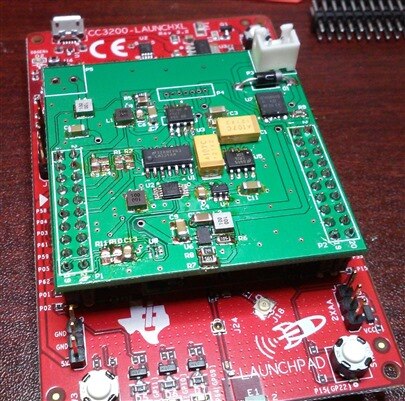
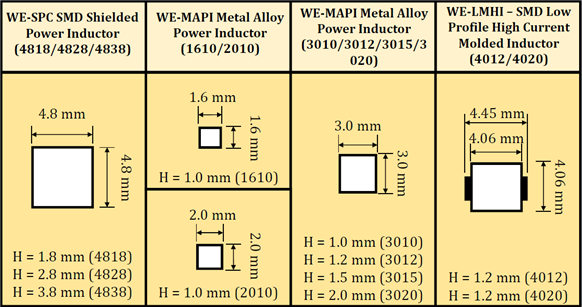
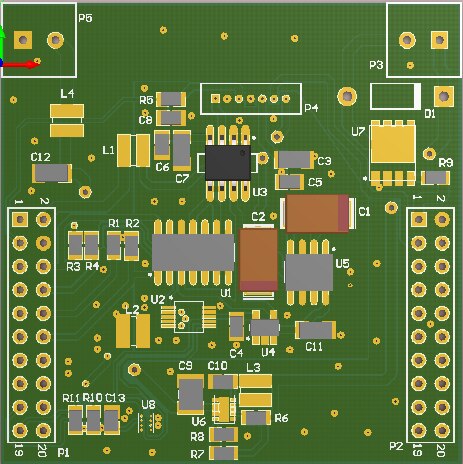
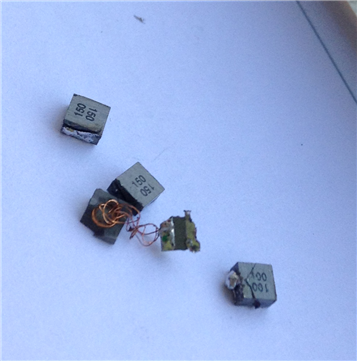
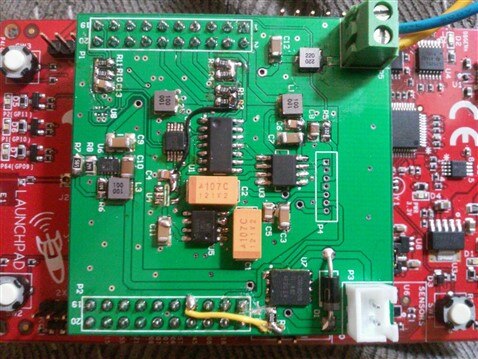
Top Comments
-

DAB
-
Cancel
-
Vote Up
0
Vote Down
-
-
Sign in to reply
-
More
-
Cancel
Comment-

DAB
-
Cancel
-
Vote Up
0
Vote Down
-
-
Sign in to reply
-
More
-
Cancel
Children